I have been quite impressed about some of the comments on forums about my T21 plane and I would like to make my contribution to these discussions.
There was a reference made about the brass kicker pads being in the wrong position i.e. cutting through one of the dovetails. I have to assure everyone that I think long and hard about the positioning of everything. Sometimes I can ponder over these decisions for months. This kicker pad is there to assist in the lateral positioning of the blade, which works in conjunction with the adjuster. In the case of castings there was usually a pip in the pattern to do this job. The kicker only has to endure very light side pressure. However its positioning is important if it is to be effective.
An interesting comment, on my blog, was that someone noticed the positioning of the five pins in my spider hub and worked out the reasoning.
The most interesting point is discussion on the stability of wood. When it comes to wood stability we will always be losers. I have always had a fascination for transitional planes probably because I am more of a woodworker than engineer. Where possible I like to combine woodworking with metalworking. Engineering is not always all about metal. However, for stability and reliability metal will always win.
The reason I decided to laminate the sole is so I could chose a light weight wood for the body, something pretty like the quilted maple, and laminate it with a harder wearing wood. With laminating in this application straight forward bonding would not have been sufficient because of the oils in the wood I chose for the sole. This is the reason for using the jointing system like ECE have on their primus planes, except I chose to dovetail whereas ECE had a tongue and groove system.
The difference in movement in different materials would be cross grained and most of it will be tangential. Over a distance of 3 3/8” it should have a minimum effect. Whether these dovetails run at right angles, longitudinal or diagonal I would think would be irrelevant and it would seem that it hasn’t affected the ECE planes. The use of the dovetail joint is it is more positive than the tongue and groove and of course there is just that little bit of vanity.
I feel that I have made some inroads with the fittings that I designed, and I would like to make this plane again in smaller sizes and in a one piece stock i.e. without the laminated sole.
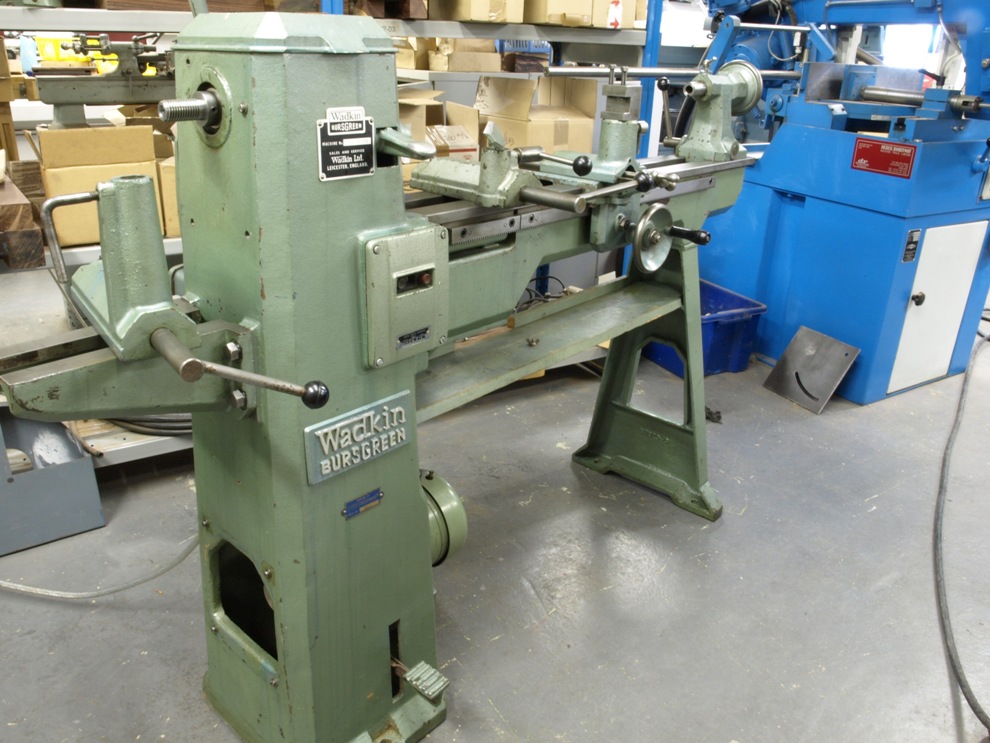
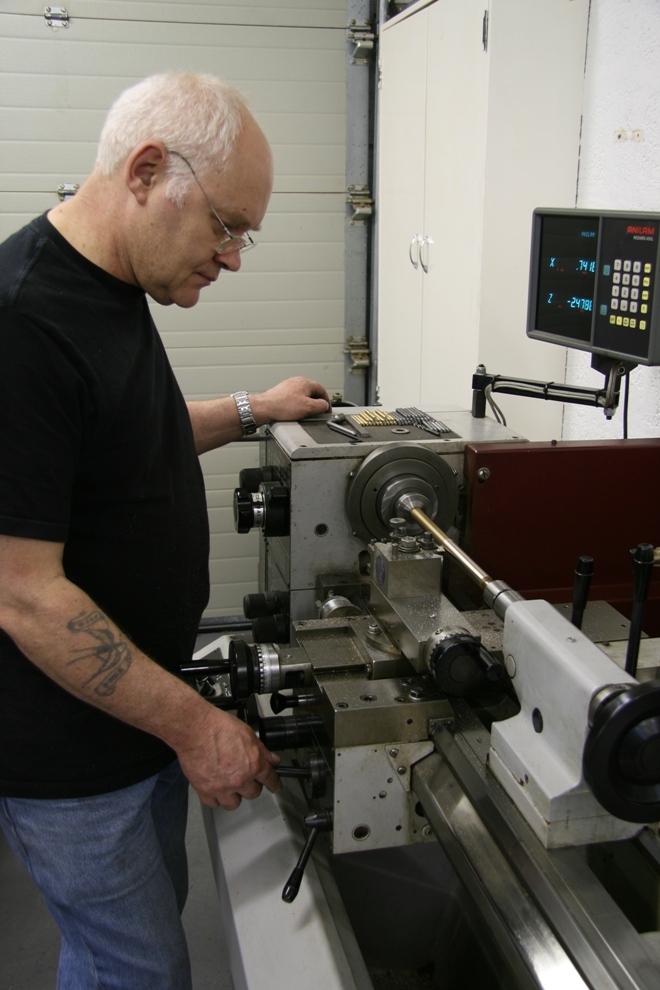
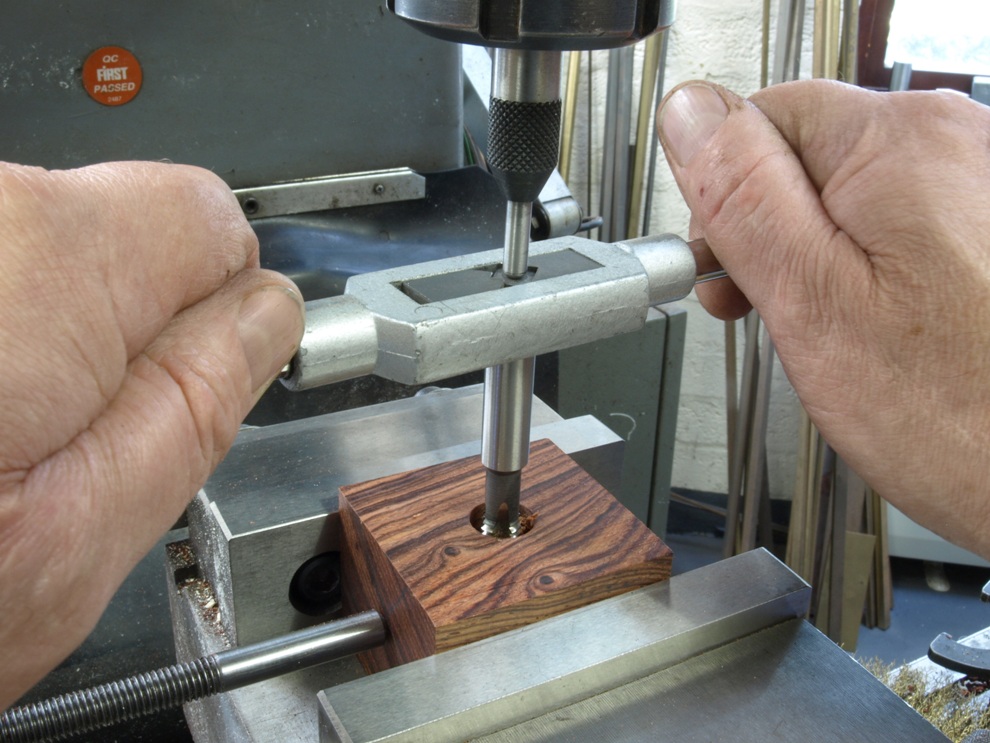
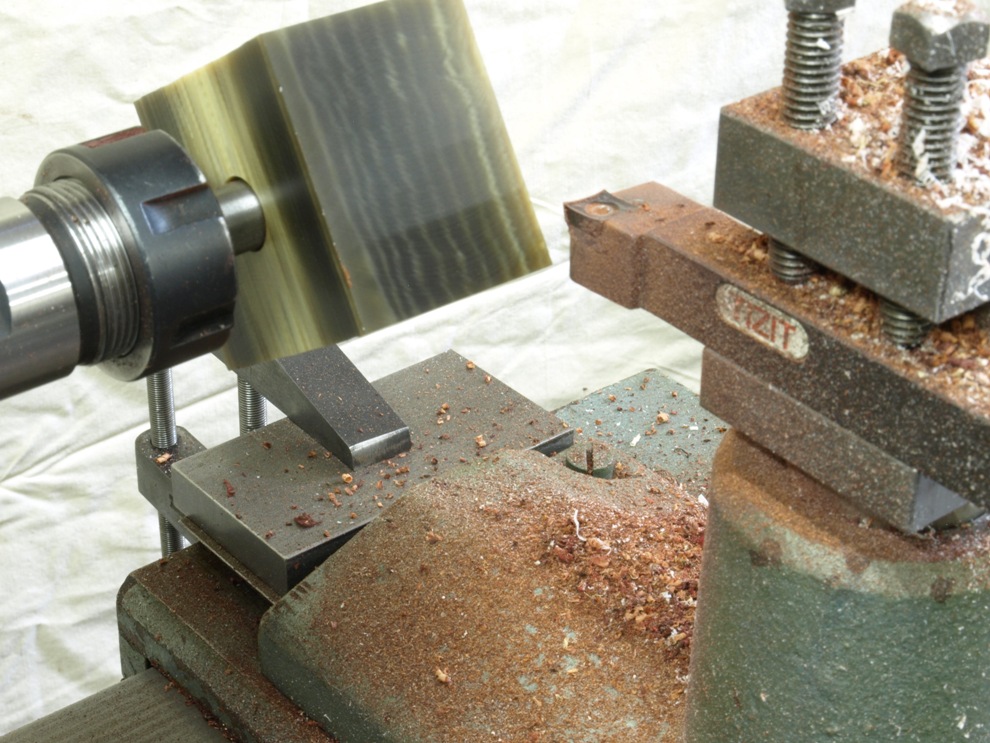
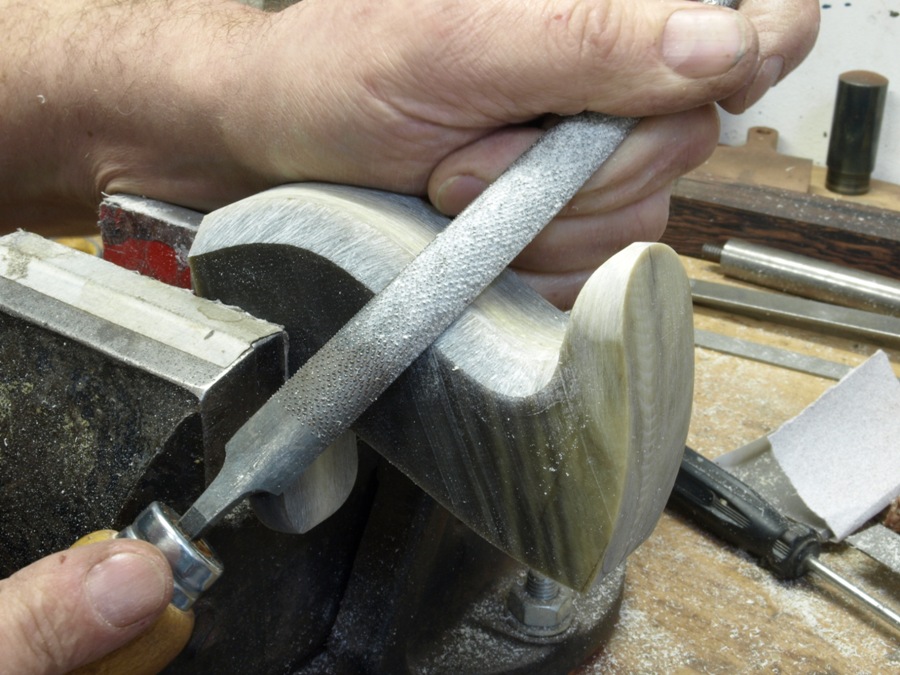
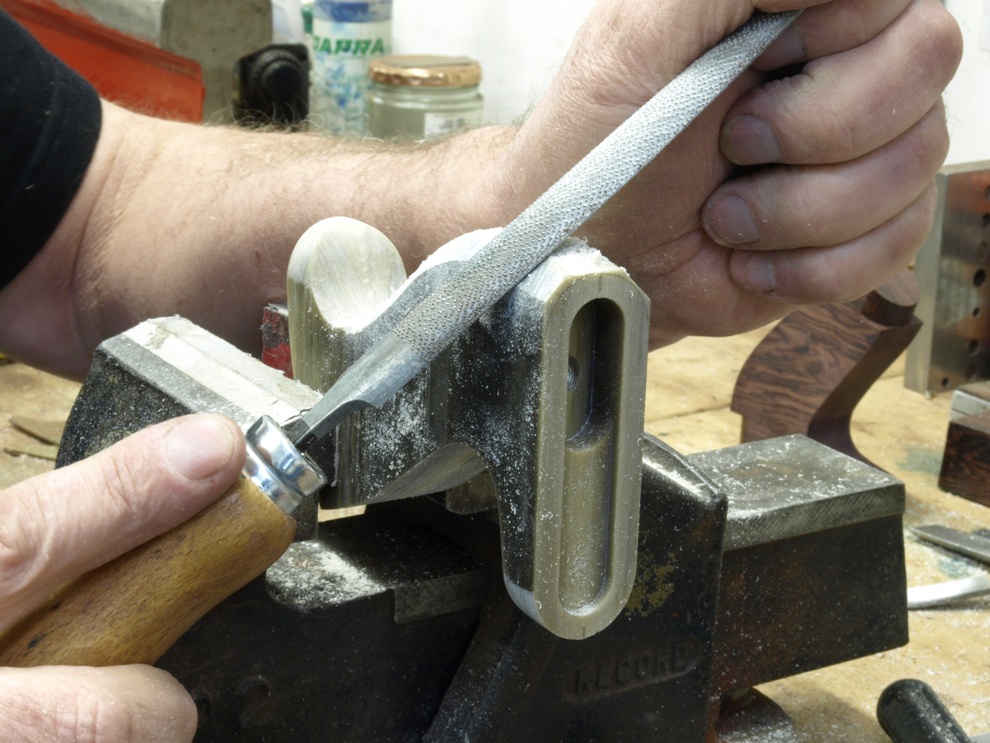
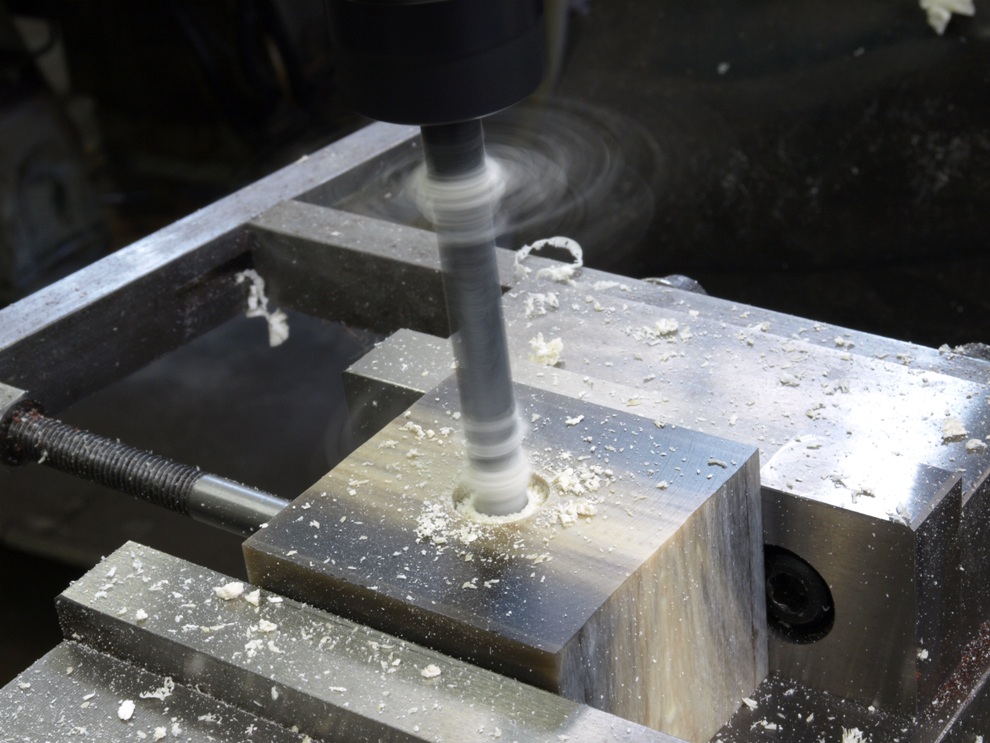
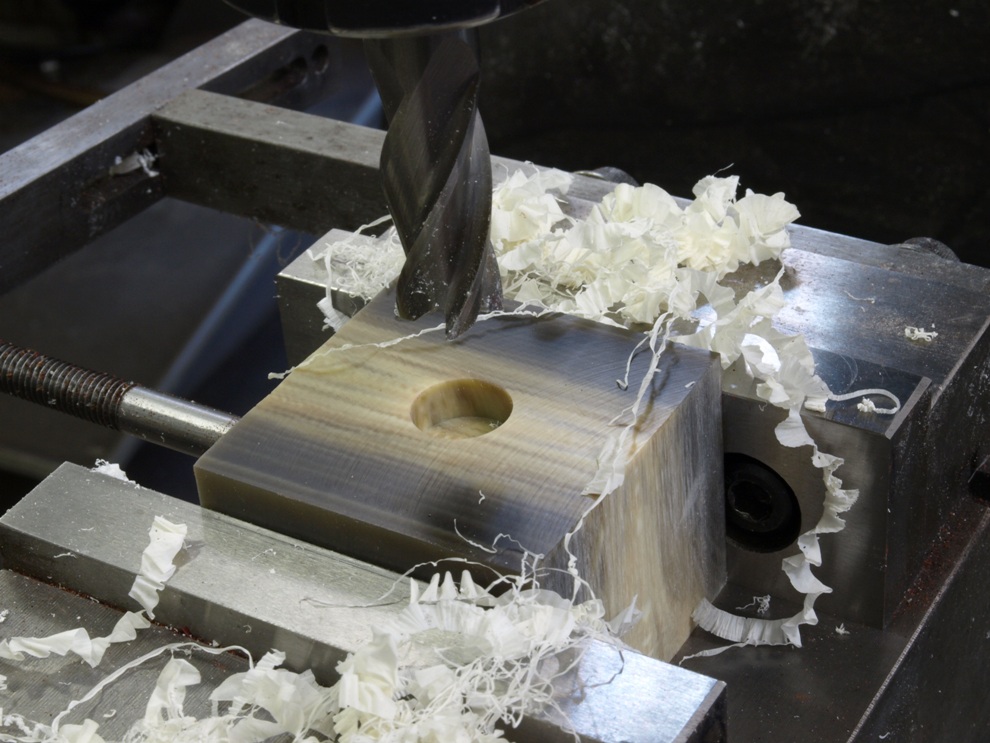
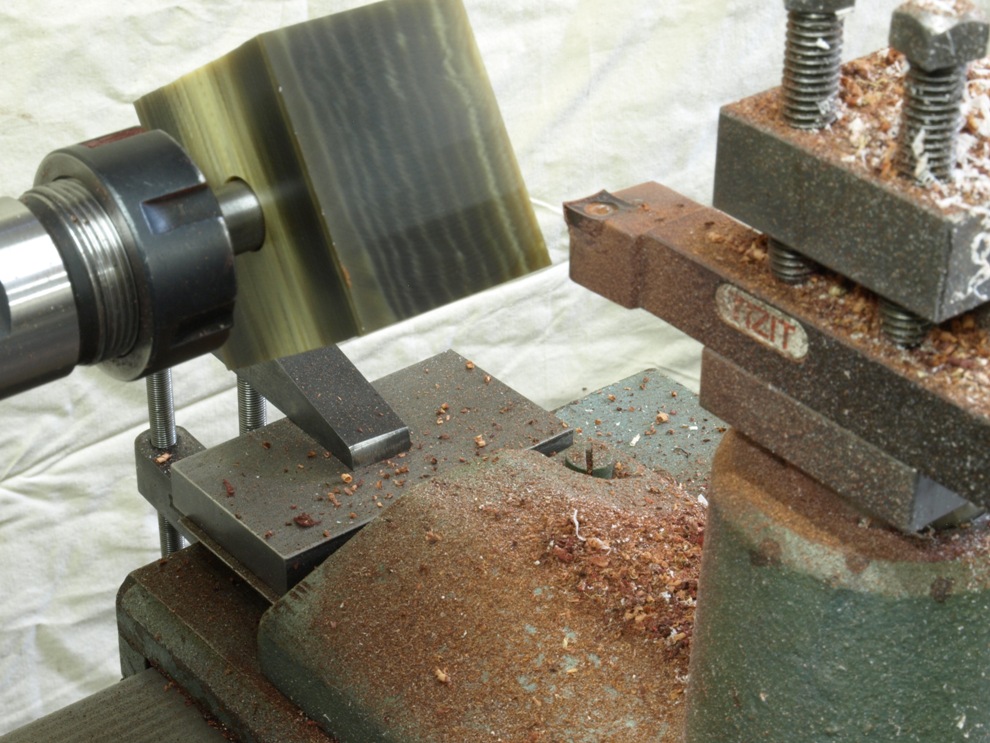
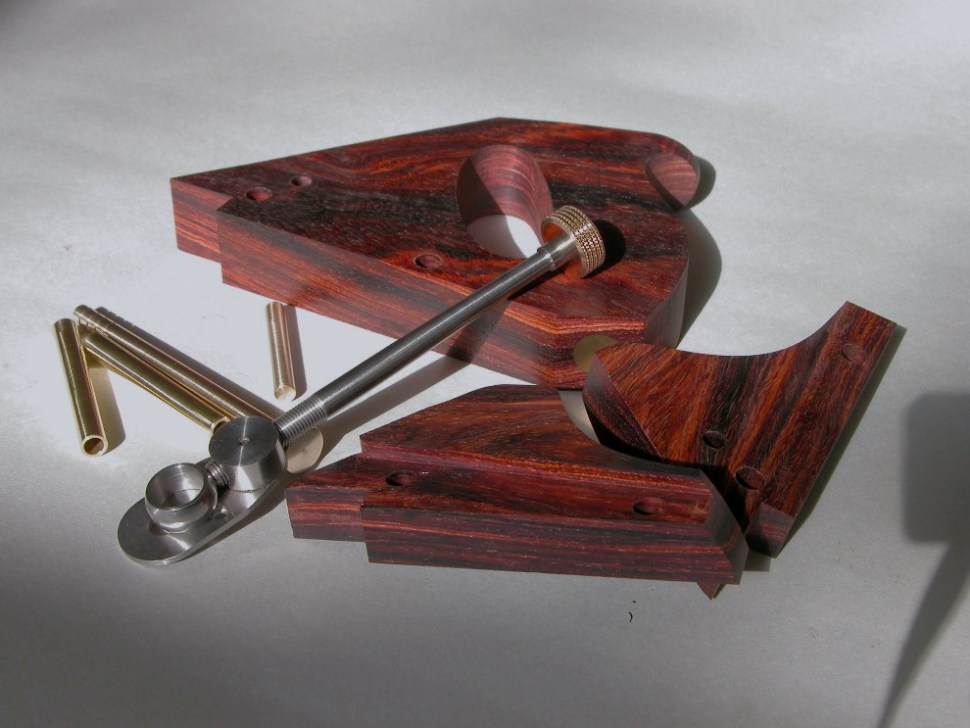
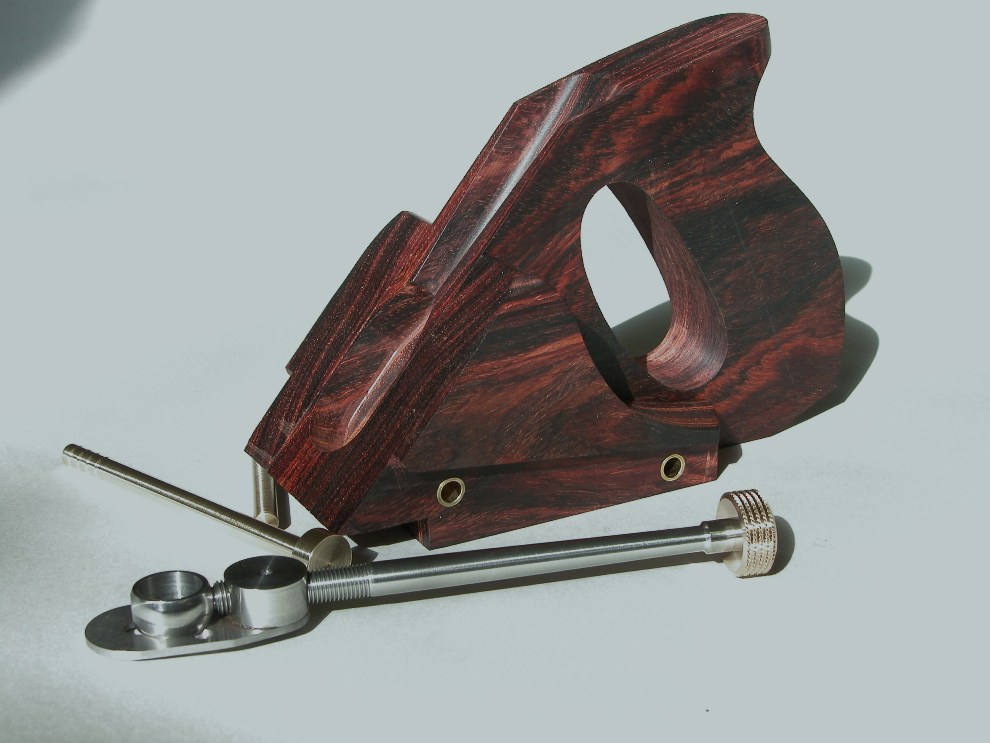
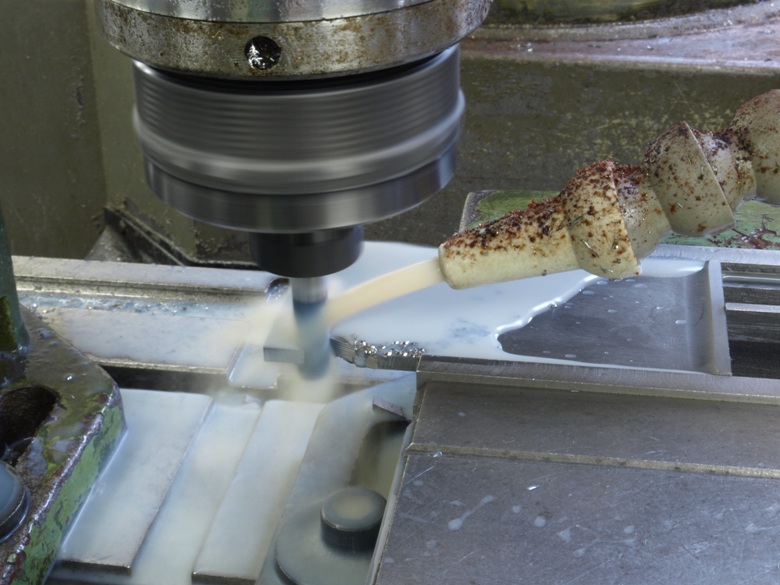
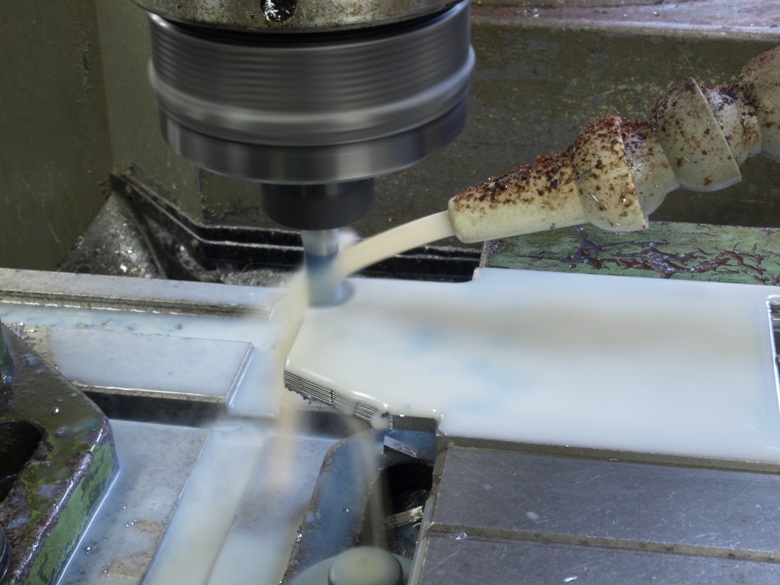
Commentary – T21 Transitional Plane
I have been quite impressed about some of the comments on forums about my T21 plane and I would like to make my contribution to these discussions.
There was a reference made about the brass kicker pads being in the wrong position i.e. cutting through one of the dovetails. I have to assure everyone that I think long and hard about the positioning of everything. Sometimes I can ponder over these decisions for months. This kicker pad is there to assist in the lateral positioning of the blade, which works in conjunction with the adjuster. In the case of castings there was usually a pip in the pattern to do this job. The kicker only has to endure very light side pressure. However its positioning is important if it is to be effective.
An interesting comment, on my blog, was that someone noticed the positioning of the five pins in my spider hub and worked out the reasoning.
The most interesting point is discussion on the stability of wood. When it comes to wood stability we will always be losers. I have always had a fascination for transitional planes probably because I am more of a woodworker than engineer. Where possible I like to combine woodworking with metalworking. Engineering is not always all about metal. However, for stability and reliability metal will always win.
The reason I decided to laminate the sole is so I could chose a light weight wood for the body, something pretty like the quilted maple, and laminate it with a harder wearing wood. With laminating in this application straight forward bonding would not have been sufficient because of the oils in the wood I chose for the sole. This is the reason for using the jointing system like ECE have on their primus planes, except I chose to dovetail whereas ECE had a tongue and groove system.
The difference in movement in different materials would be cross grained and most of it will be tangential. Over a distance of 3 3/8” it should have a minimum effect. Whether these dovetails run at right angles, longitudinal or diagonal I would think would be irrelevant and it would seem that it hasn’t affected the ECE planes. The use of the dovetail joint is it is more positive than the tongue and groove and of course there is just that little bit of vanity.
I feel that I have made some inroads with the fittings that I designed, and I would like to make this plane again in smaller sizes and in a one piece stock i.e. without the laminated sole.